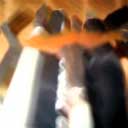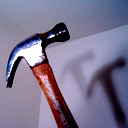 In my 72nd podcast I continue talking about my “Summer Listening List,” focusing on Chris Marquardt’s “Tips From the Top Floor.”
In my 72nd podcast I continue talking about my “Summer Listening List,” focusing on Chris Marquardt’s “Tips From the Top Floor.”
I’m beginning to get psyched for the Northeast Regional DEN Event in Valley Forge. I won’t say too much about it now, but I will post a link to the event’s wiki.
Instead, I’d like to talk about part two of my summer listening list. Last time I plugged History According to Bob, which is a great resource for anyone interested in history. Today, let’s talk digital photography.
With the proliferation of camera phones and photo sharing sites like Flickr, it’s obvious that there are many more people getting interested in the digital side of photography. Alas, like in all things, having the ability to do something is not the same as knowing how to do it well. (Have you ever seen a PowerPoint presentation that was so bad it hurt your eyes to look at it, in spite of the useful information it contained? I have.)
Enter Chris Marquardt, master of both sound and photography. First from his home in southern Germany and now from his studio in … southern Germany, Chris produces his Tips From the Top Floor three times a week.
Rather than focus on just the high end professional stuff, Tips From the Top Floor covers the gamut from point and click camera phones to 8 megapixel Nikon DSLRs, with some image manipulation tips using Photoshop and GIMP for good measure.
Rather than stop there, you can also find a thriving forum on his site that discusses photography news, tips, tricks, and is more than willing to offer constructive criticism for your own photos.
If you have any interest in the medium of digital photography, you should really check this one out.


